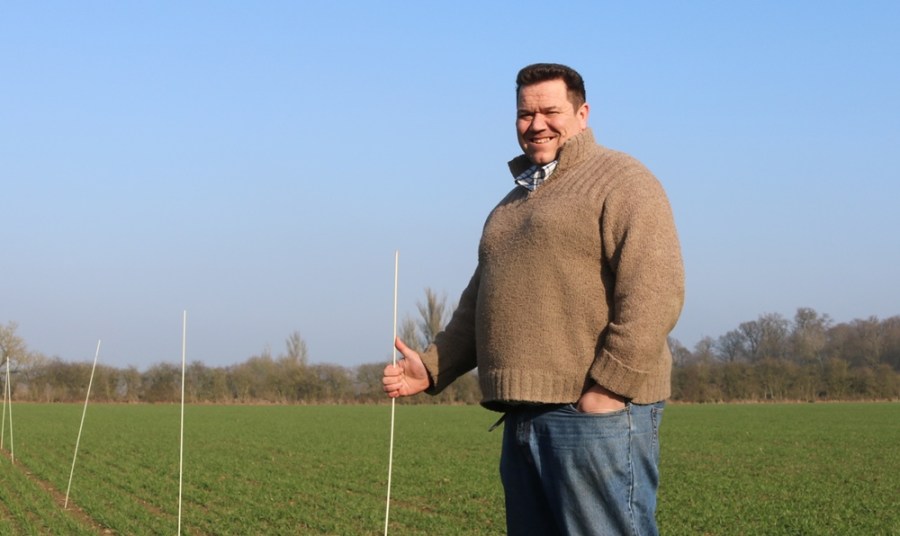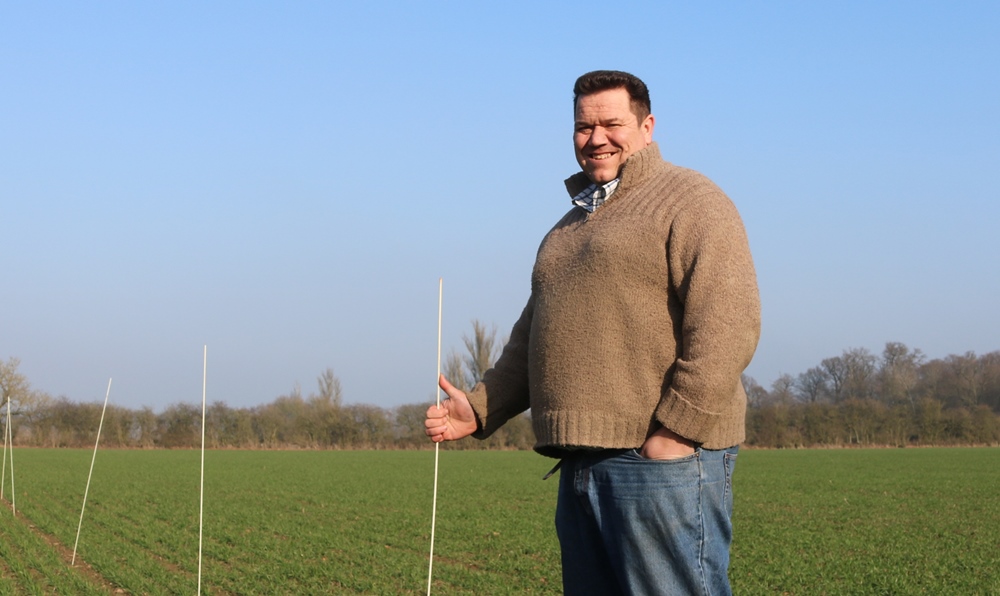
Lincs grower Keith Challen has spent the past four years developing a controlled traffic farming system across his heavy, fertile soils. CPM visits to find out how he’s applying the same meticulous approach to on-farm trials.
I know what my farm needs and will investigate it thoroughly.
By Tom Allen-Stevens
Even the name of this new hunk of metalwork conjures up something that’s mysterious and probably a little bit different.
“It’s a Farmet Phantom,” says Keith Challen, manager of Belvoir Farms in Lincs, as he claps a hand assuredly on one of the sturdy break-back springs of the 12m cultivator.
“I like what suits me and have never been a follower of fashion. I know what my farm needs and will investigate it thoroughly – no decision is ever flippant.”
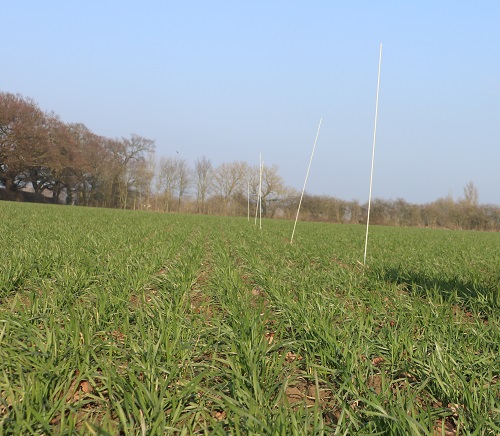
The area in the field for the Real Results trial has already been selected.
This is why he was one of the first farmers to sign up to join BASF’s Real Results Circle – a group of growers coming together and sharing results from on-farm trials to find out what really works in the field (see panel below).
The particular purchase that lies in the yard ties in with a gradual move he’s made to take the 1080ha of arable cropping across the Fladbury and Denchworth series heavy clay soils to a controlled traffic farming (CTF) system. It’s the latest chapter in a transition the soils of the estate have been through – until the 1970s, they’d always been deemed too heavy to bring into an arable rotation. That was before the previous farm manager, Mick Williamson, thought otherwise and started to work the ground with a steel-tracked crawler and discs.
“It’s one of the reasons I was keen to come here,” explains Keith Challen, who became farm manager in Aug 2010. “I had a head start with these soils because they were in good health – the organic matter ranges from 6-10%.”
For 18 months, he kept the cultivation system largely the same. Then he started the four-year transition to CTF, seeking out the primary pieces of kit that would ensure success. “The first step was the combine as that makes the most damage – previously, you could see the combine wheelings criss-crossing the field in the following crop.”
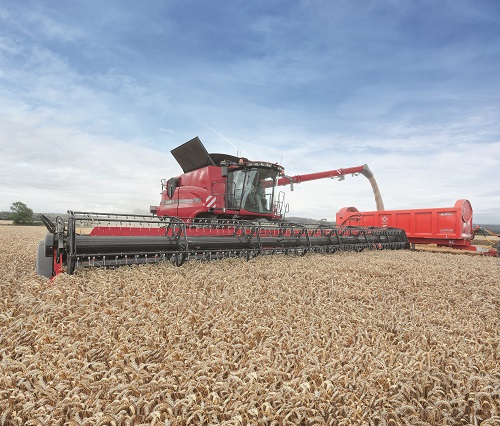
The Case IH Axial Flow 9230 came with a 12m unloading auger so the grain cart could run on the adjacent wheeling.
The system is based on 12m centres, and 36m tramlines, with all traffic restricted to travelling strictly on those wheelings. The combine he selected was a Case IH Axial Flow 9230 with 12.5m header. It also required a 12m unloading auger – the longest available – so the grain cart could run on the adjacent wheeling. “The Axial Flow is a great combine from the header until you get to the chopper, but that’s the bit that lets it down,” says Keith Challen.
Determined to achieve the consistency and evenness of the straw chop he wanted across the full 12m, he worked with Case to find the piece of machinery that would deliver this. It eventually came to light from Canadian manufacturer Redekop. “It’s taken us two years to fine tune their MAV chopper, but it’s revolutionised that combine,” he comments.
The next challenge was the drill. “I knew exactly what I was looking for, and was happy to wait for the right tool to be invented, if needs be.”
The incumbent kit was a Simba Freeflow, but Keith Challen wasn’t happy with the amount of soil it was shifting. “The blackgrass was getting worse, and I knew we were three to four years off getting into a pickle,” he notes.
“I believe the key to keeping blackgrass in check is to keep cultivations shallow, and to drill at 25mm depth. The Freeflow coulter travelled at this depth, but it was cultivating deeper, causing blackgrass to germinate from around 50mm.”
The drill also needed to be a disc drill, for min disturbance, and, of course, stretch across the full 12m of the CTF system, without putting so much tug on the front that the farm’s QuadTrac couldn’t purr along with ease.
“We set up some on-farm trials, and put three drills alongside each other – when you’re planning to spend £80,000 on a new piece of kit, you have to be confident you’re going to be £80,000 better off as a result,” he notes.
It was the side-by-side trials that made the differences apparent. “One drill was just too heavy if the soils were moist, while the results from another looked good, until you turned up the seed – it wasn’t consolidating the soil properly and left the seed exposed to slugs.”
Eventually he settled on a 12m Amazone Citan. “This drill just sneaks the seed in at a consistent 25mm depth and doesn’t dig any deeper. You can also put a little phosphate in with the seed, and importantly, it has a set of flat harrows, for an even, min-disturbed surface. What’s more, it doesn’t mind if the soils are a bit moist, so we can push the drilling window that little bit later, which helps with the blackgrass.”
The final piece of the jigsaw was the primary cultivator. “I wanted tines, and lots of them, but narrow, hard-wearing points and ones that would work to a shallow depth without smearing. The packer is important – the Double-D press is probably the biggest revolution we’ve seen in heavy land farming, so I wanted something that would do the same job.”
And it was at LAMMA last year he eventually alighted on the Farmet Phantom. “There were one or two more well known cultivators that would probably do the job, but I wasn’t keen on the build quality. The Phantom is very well built and I reckoned it would take the QuadTrac.”
A demonstration model was pulled round the farm last autumn – the first year it’s moved to a true CTF system – and resulted in the purchase that now sits in the shed, as yet unused. “We make one to three passes with the Phantom, depending on trash, conditions and slugs – I make the decision on the day, field by field, and set the depth to 25-75mm.”
But it’s not just the metalwork that gets close scrutiny and refinement. Keith Challen gives the crops themselves the same meticulous care and attention. “I’m an investor in crops and always push areas that we know will bring us yield. But all the big advances in agronomy have already been made – to get the extra returns you have to do the little bits, but lots of them.”
The results speak for themselves – a third of the farm is drilled to winter wheat, and yields on average over 11 t/ha. Spring barley now makes up another third, with performance improving year on year (with the exception of 2016) and peaking “just shy” of 10t/ha in 2015.
Seed rates are one of the “little bits” where Keith Challen believes there’s leeway for improvement. “We use farm-saved seed and sort the seed carefully, taking only the finest grains from the heap. Then we only dress what we drill – that way, we can decide the rate on the day, tailoring it to field conditions, rather than rate being dictated by the tonnes we have sow.”
The farm’s fields have been scanned and mapped, with seed rate adjusted variably +/- 20% by GPS. But it’s the overall field rate that he’s focused on – he’s carrying out trials in spring barley that have turned up surprising results. “I think seed rate is the key with spring barley, because it just doesn’t have time to tiller like wheat. Last year, we trialled different rates up to 500 seeds/m², and that was the highest yield. So we’re taking the trials as high as 600 seeds/m² this year.”
In the past, he’s also been involved in fungicide trials. “It was 2012, and everyone was talking about the new SDHI Adexar (fluxapyroxad+ epoxiconazole). We hosted a trial of Adexar at 1.5 l/ha at T2 against two competitor products. Adexar did come out on top, but that wasn’t the most interesting result from the trial,” he notes.
“I used Adexar on the wheat in the rest of the field around the trial, but applied it at 2 l/ha – I could see it was turning into a mucky year, and I find you always get the best results from a product in the year it’s released. It turned out that was a sound decision, and we got an extra £65/ha margin over input cost, above what was achieved in the trial, as a result.
“If it hadn’t been for the trial, we wouldn’t have known exactly what we were getting from the new chemistry,” points out Keith Challen.
That’s why he’s already signed up to become part of BASF’s Real Results Circle (see panel below). “BASF has always been professional in its approach to on-farm trials, and I like what Clive Bailye did last year (see CPM, Dec 2016 issue). The difficulty will come in what we’ll compare Adexar with – there’s some new chemistry on the market I’m keen to try out.”
He believes the key to making trials work is to dedicate some time and attention to them. “I’m very pro-trials – you can’t leave it up to others to do the work and bring you the results if you want something that’s relevant to your own situation. Our sprayer operator, Anthony Howitt, also buys into it, and that’s important.
“We select fields close to the farm for trials, and I’ll generally go on the mixer wagon, so I can get the chemical selection correct – it might take you an afternoon to get it right, but we’re not so tight we can’t spare that.”
Harvest is the other key point in the season to ensure accurate results. “We’re in that mindset anyway – Anthony runs the store and we always weigh everything over the weighbridge, so it’s easy to segregate the area and weigh it separately.”
The key for Keith Challen is payback. “You have to do trials over two or three years to get real value from them, but the right product could be worth tens of thousands of pounds to my business. I also like the collaborative approach of these trials. We aim to be as professional and open-minded as we can in our approach to farming. In an initiative with like-minded farm businesses, I think there’s plenty we can all benefit from it.”
Eye in the sky brings detail from the trial
There’s an 11.59ha field on the Belvoir Estate that’s all set up for the Real Results trial. It’s come out of spring beans and the Reflection winter wheat has started the season looking strong and clean – packed with potential.
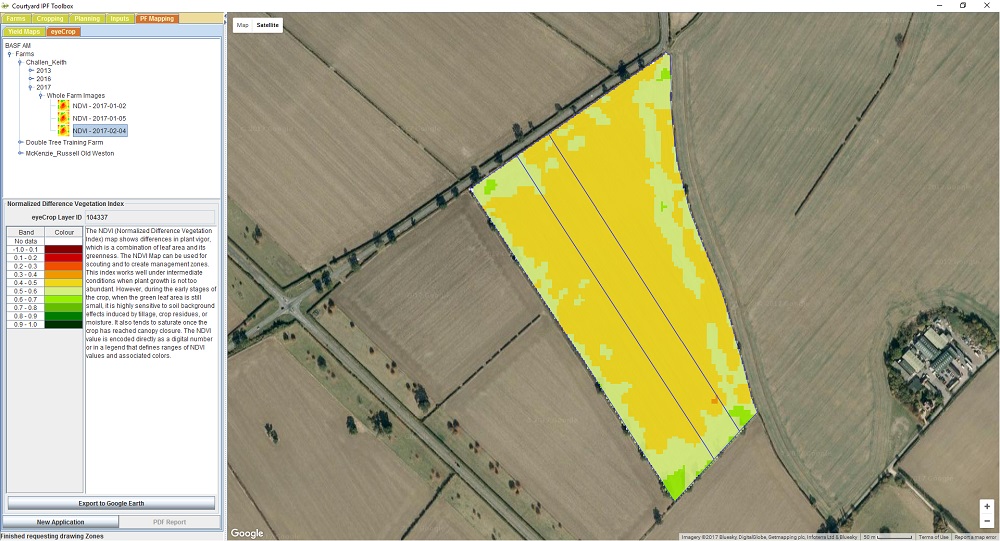
Two tramline widths have been marked up and soil brightness information has been gathered from the field.
Two tramline widths have already been marked up by precision agronomy specialists AgSpace, explains the company’s Vince Gillingham. “We’ve already gathered soil brightness information from the field. The technique uses multi-spectral satellite data to assess soil and ground-cover variation to 5m resolution. We’ve supplied that information to ADAS who decide where the trial should go.”
It’ll be one of 50 on-farm trials across the UK where Adexar and Librax (fluxapyroxad+ metconazole) will be tested against other fungicide programmes in a way that conforms to the farm’s systems and drivers. With product provided free by BASF, ADAS and Agspace are bringing independent expertise and trials management. What’s more, beyond the 50 involved in the trials, any grower can join the Real Results Circle and get access to content, information and guidance on how to set up their own on-farm trials.
On the Belvoir Estate, care has been taken to ensure the trial area is uniform and consistent, not just throughout its own area, but also relative to the non-trialled area of the field. “We want this to be a fair trial that will be a true comparison of the products, so we’re trying to eliminate any variables that may skew the results,” says Vince Gillingham.
Initial assessment of the field in question reveals it is remarkably uniform, and bar a small area near the north-west corner of apparently heavier soil, the Fladbury series clay looks consistent with no obvious hollows or patches in the crop.
“The trial is now set up on a mobile app, so when samples are taken, they can be georeferenced and pinpointed. We’ll be monitoring the crop throughout the season, providing updates on crop growth stage and cover – by harvest there’ll be a huge amount of data we can analyse, and layers of information we can compare,” he notes.
“While ultimately this trial is about the yield, we hope the extra data we can provide through the satellite imagery and software we’re applying will give some insight on where that yield is coming from. Throughout the 50 trials we’re monitoring, that’ll build into a powerful dataset.
“So farm-level trials, as well as providing useful feedback on the commercial use of crop protection inputs, can also provide detailed analytical data that’s of real use for the growers involved,” concludes Vince Gillingham.
The Real Results Circle
Farming in the UK has never before been confronted with such a perfect storm of uncertainty.
Uncertainty over where the industry is headed post Brexit; uncertainty of returns, because of fluctuating prices and stagnating yields; uncertainty over the removal of chemical active ingredients from the arable toolkit, and uncertainty over which of the mind-boggling array of new products, technologies and tools would be best to try to get to grips with.
To combat growing uncertainty, BASF and CPM are encouraging everyone with a passion for UK farming to unite. We want to help form an agricultural knowledge network of experts, industry specialists, agronomists and farmers.
We want farmers to share their knowledge and conduct on-farm trials. By coming together to face challenges as one, we can find out what really works and shape the future of UK agriculture.
This year, BASF’s Real Results Circle is exploring wheat fungicides and oilseed rape profitability. This series of articles in CPM profiles some of the growers who’ve joined the Real Results Circle, giving an insight into how they optimise returns from their crops. We’ll also have topical advice and expert guidance from ADAS on how to get the best from on-farm trials.
To keep in touch with the progress of these growers and the trials, go to www.basfrealresults.co.uk

